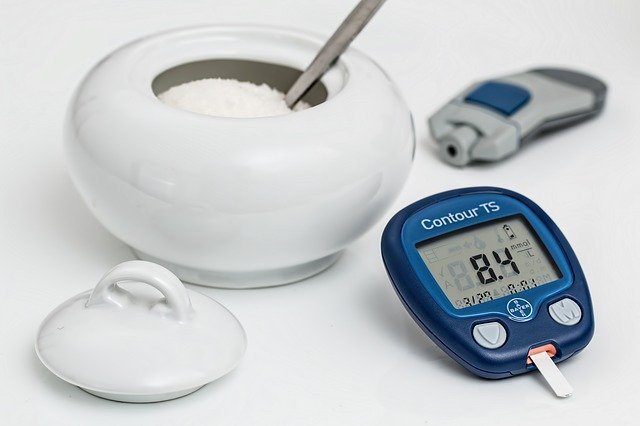
In a new statement, researchers suggest that people with type 2 diabetes and heart disease may benefit from newer therapies.
The statement was developed on behalf of the American Heart Association’s Council on Lifestyle and Cardiometabolic Health and Council on Clinical Cardiology.
Type 2 diabetes (T2D) affects treatment options for patients who have both coronary artery disease (CAD) and T2D.
The scientific statement provides an overview of the latest advances for treating people who have both CAD and T2D and details the complexities of care for these conditions together.
When a person has T2D, their body is not able to efficiently use the insulin it makes to keep glucose (blood sugar) at a healthy level, and people with T2D often have overweight or obesity, high blood pressure and high cholesterol, which further increases the risk of cardiovascular disease.
For many years, reducing glucose to healthy levels was considered the most important goal of therapy for T2D.
Metformin is the most frequently recommended medication for initial treatment to lower glucose in people diagnosed with T2D.
Metformin sometimes leads to mild weight loss, is at least neutral in terms of cardiovascular effects, is inexpensive and has a long use and safety history.
However, the statement notes that the latest research indicates several newer classes of medications may both lower glucose and reduce the risk of cardiovascular diseases.
Sodium-glucose co-transporter inhibitors (SGLT2 inhibitors), which are oral medications, were the first class to show clear benefits on cardiovascular outcomes.
In a recent study of people with T2D and a diagnosis of heart disease, researchers found that patients taking SGLT2 inhibitors were significantly less likely to die of cardiovascular disease.
They had a reduced risk of heart failure, less progression of chronic kidney disease and also lost weight.
Glucagon-like peptide-1 receptor agonists (GLP-1 receptor agonists) are a class of injectable medications that lower blood glucose and can also cause a reduction in weight.
Recent study results about their efficacy in reducing cardiovascular diseases have been mixed.
However, a few GLP-1 receptor agonists have been shown to reduce the risk of major cardiovascular events caused by cholesterol build-up in the arteries, such as heart attacks and strokes.
For older adults, relaxing glycemic control slightly might be beneficial because it may reduce the risk of hypoglycemia – when glucose levels become too low.
The team says hypoglycemia is incredibly hard on the heart and should be avoided particularly in older patients.
With some medications, such as metformin, SGLT2 inhibitors and GLP-1 receptor agonists, the risk of hypoglycemia may be reduced.
Preventing blood from forming clots is also an important goal of CAD treatment.
Aspirin, which is a blood thinner, may be appropriate for many people with CAD, but may not work as effectively in people with T2D and CAD.
Therefore, newer, stronger antiplatelet medications (a form of blood thinner) should be considered.
Since all antiplatelet medications increase the risk of bleeding, it is important to balance the risk for each patient of increased bleeding versus the benefit of reducing the tendency of the blood to clot.
Type 2 diabetes may also influence what type of interventional procedure is best to use to re-open an artery to increase blood flow in indicated patients.
Studies have found a greater reduction in the 5-year risk of death, heart attack or recurrent angina/chest pain when patients with T2D and CAD undergo coronary artery bypass graft (CABG) surgery to widen a narrowed blood vessel instead of treating the narrowing with angioplasty and stenting.
In contrast, the advantage of bypass over stenting is not as dramatic in people without T2D.
Additionally, unhealthy cholesterol levels, such as high LDL (bad cholesterol), low HDL (good cholesterol) and high triglycerides (blood fat), which are major risk factors for CAD, are common among people with T2D.
In many patients, even if LDL levels are not exceptionally high, people with T2D often have a type of LDL particle that is more likely to increase the risk of atherosclerosis, the slow narrowing of the arteries that underlies heart disease.
The vast majority of patients with T2D have hypertension. Blood pressure control is critically important in the management of CAD in patients with T2D.
The team says more aggressive steps may be needed to improve the cholesterol levels in people with T2D.
Statins, the cornerstone of cholesterol-lowering therapy, may slightly increase blood sugar levels, however, the overall cardiovascular risk reduction they provide is far more beneficial.
Blood sugar changes are not a reason to avoid prescribing statins for people with type 2 diabetes.
Some patients with CAD and T2D may also benefit from lowering cholesterol with additional classes of medications, such as oral cholesterol absorption inhibitors or newer injectable medications, which have been shown to be beneficial in people with diabetes.
The team says while treatment with medication is very important in the treatment of people who have both T2D and CAD, no pill is a substitute for a healthy lifestyle.
No matter what new medicines there are, a heart-healthy diet, achieving and maintaining a healthy weight, regular physical activity and treating sleep disorders remain the major cornerstones of treatment for T2D and cardiovascular disease.
The study is published in Circulation.



